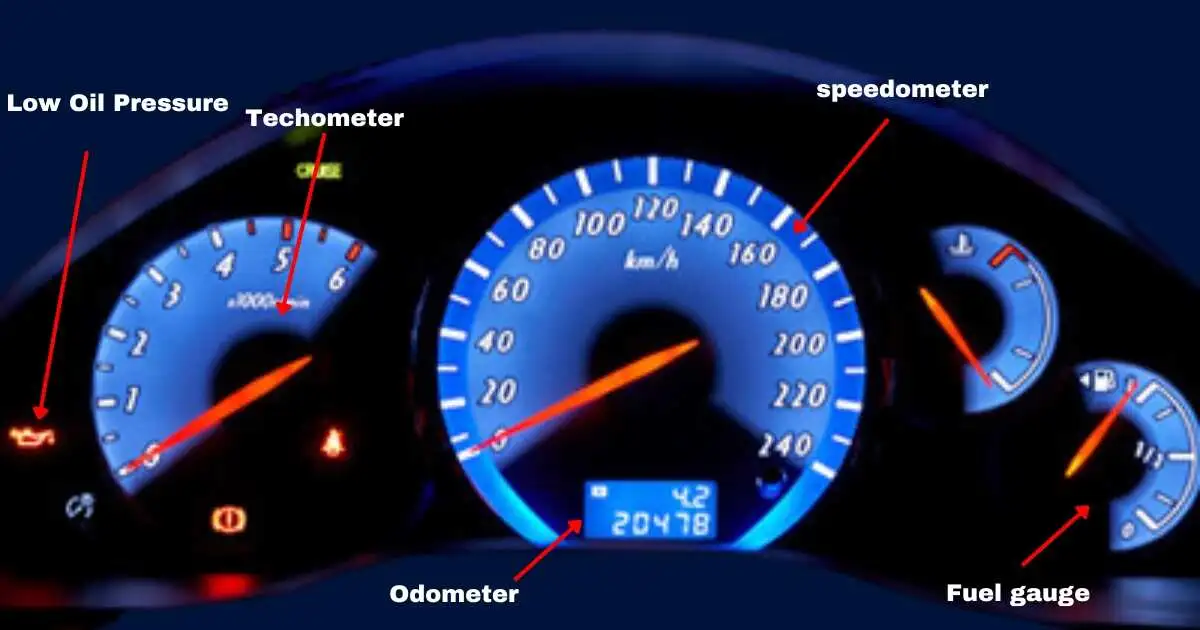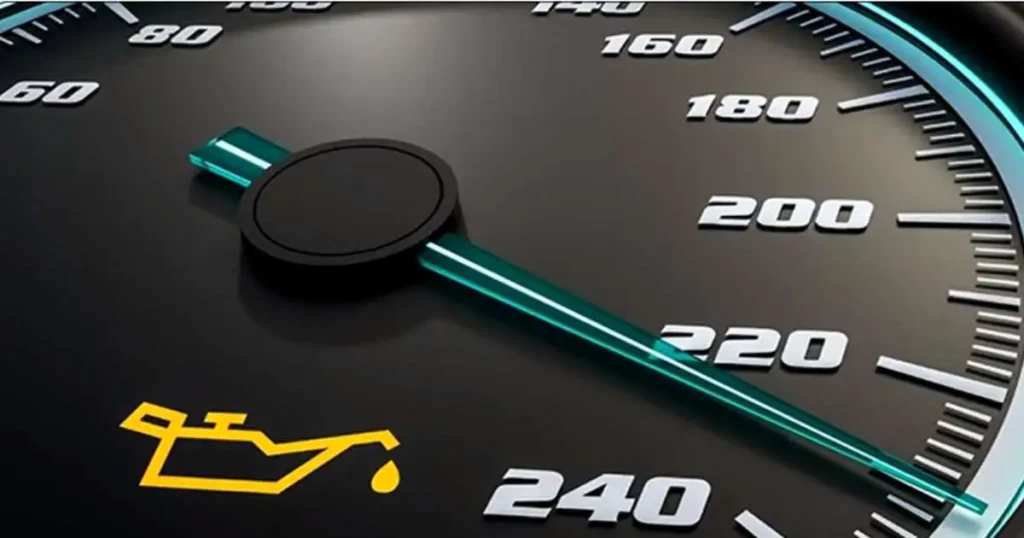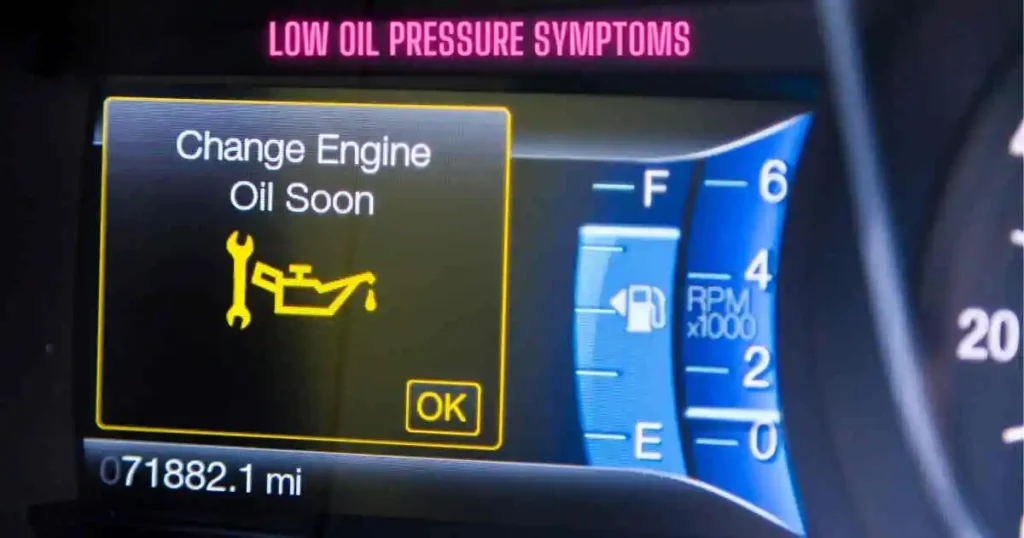Understanding: Low Oil Pressure Symptoms, Causes, and Solutions

When it comes to the condition of your car, low oil pressure can be the harbinger of trouble. It’s an essential sign of how well your engine is doing, shown quite literally on most dashboard displays. Ignoring it can lead to serious, potentially catastrophic issues. Everything you need to know about low oil pressure, its causes, and how to fix it without having to make expensive repairs will be covered in this extensive guide. This article will teach you how to protect both the longevity of your vehicle and the health of your wallet, regardless of whether you own a car or are an experienced DIY mechanic.
What is Low Oil Pressure? or low oil pressure meaning

Low oil pressure means: Oil pressure is the force that pushes oil through your car’s engine.For the engine to function properly, coolant must be added, and all parts must be properly lubricated. Low oil pressure occurs when the pressure falls below what the manufacturer recommends. It’s similar to having low blood pressure; it’s not just a figure on a dial or screen; it plays a vital role in the general well-being of the system it supports.
Knowing how important oil pressure is isn’t just for auto enthusiasts who like to fiddle around under the hood. Whether you drive a vintage muscle car, a used pickup, or a brand-new sedan, it’s crucial.
Decoding the Low Oil Pressure Light in Your Car
If you drive a vehicle, chances are you’ve encountered the dreaded low oil pressure light at some point. Understanding this warning and knowing how to respond can be crucial for the health of your car’s engine. Here’s a quick guide to help you navigate this common automotive issue.
What Does the Low Oil Pressure Light Indicate?
The low oil pressure light is an indicator that there may not be enough oil circulating in the engine to keep it properly lubricated.
It often illuminates when the oil pressure falls below a certain threshold, signaling potential trouble.
Actions to Take Once the Light Turns On
- Pull over t o a safe location as soon as possible.
- Check the engine oil level using the dipstick and top up if necessary.
- If the oil level is sufficient, do not continue driving and seek professional assistance.
- Have the vehicle towed to a trusted mechanic for a thorough inspection.
Why low Oil Pressure Is Important
For your engine to run smoothly and last a long time, the lubrication system’s oil pressure is essential. It guards against possible damage brought on by insufficient lubrication by guaranteeing an efficient flow of lubricant to every component. Low oil pressure is an indicator of possible problems that, if ignored, can result in expensive repairs or even engine failure. The performance and health of your engine depend on keeping the oil pressure at the proper level.
Low oil pressure symptoms

Low oil pressure isn’t always obvious until it becomes a severe problem. If your dashboard light hasn’t started its foreboding glow, you might miss the early symptoms that suggest your engine’s health isn’t at its peak. Here are a few signs to look out for:
- Illuminated Warning Light: Your “oil pressure low” light is the first indication.
- Ticking or Clicking Noises: These can signify that components aren’t being lubricated sufficiently.
- Loss of Overall Power: The lack of oil flowing through your engine can lead to rough idling, stalling, or general loss of power.
- Increased Oil Consumption: If you’re finding yourself refilling the oil more often than usual, your engine might be leaking or burning oil.
- Smoke from the Exhaust: Blue smoke can be a telltale sign of oil leaking into the combustion chamber.
Each of these symptoms demands immediate attention, but so does recognizing that they can easily be mistaken for other, less dire issues.
low oil pressure causes
Identifying the root cause is key to addressing low oil pressure effectively. The leading culprits can be categorized into a few key areas:
- Lack of Oil: This might sound too simplistic, but low oil is a common cause. Whether there’s a leak or it’s just old and burned off, without adequate oil levels, the pump can’t move what it doesn’t have.
- Oil Pump Issues: The pump itself can falter due to wear, clogs, or other mechanical issues. If it’s not circulating the oil, the engine won’t be feeding properly.
- Worn Engine Components: Older engines with high mileage might have wear to bearings, crankshafts, or camshafts, leading to increased clearances and a loss of oil pressure.
- Oil Viscosity: If the oil is too thick or too thin for the engine’s needs, it may not be flowing properly at different temperatures, leading to higher or lower pressure than necessary.
- Faulty Pressure Gauge: Sometimes, it’s not the oil pressure at all, but the sensor or the gauge itself that’s at fault.
Lifesaving Measures: Solutions to Low Oil Pressure
As with any medical issue, early detection and treatment can save lives. For your car, the prescription for low oil pressure can range from the routine to the complex. Here are some measures you can take to resolve the issue:
Check and Top-up Oil Levels
The easiest and most neglected solution is to ensure your engine has sufficient oil. Regular checks, at least once a month, can prevent the hassle of dealing with low oil pressure symptoms.
Thorough System Inspection
If you’re mechanically inclined, inspecting your oil system can provide valuable clues. Check for leaks, and visually inspect the oil pump, its connections, and the pressure relief valve for any signs of damage or malfunction.
Replace Worn Parts
Should your investigation reveal worn bearings or a damaged oil pump, the only recourse may be replacement. Always use OEM or high-quality aftermarket parts to ensure the longevity and performance of your engine.
Change and Maintain Quality Oil
Regular oil changes with high-quality oil and routine inspection of viscosities suited for your engine and driving conditions can shield you from many pressure-related woes.
Regular Maintenance
Institute a regimen of maintenance that includes regular filter changes. Stay on top of your vehicle’s service schedule — it exists for a reason and can be your best defense against low oil pressure and other catastrophic engine problems.
The health of your car’s engine is contingent on a comprehensive approach to maintenance. Enough vigilance to identify symptoms, a grasp on the potential causes, and a proactive stance toward treatment can keep your engine running smoothly.
How to Fix Low Engine Oil Pressure
Low oil pressure, even though the oil is full, might mean a potential major problem with the oil pump, or can be an undiagnosed issue with your vehicle’s engine. In either case, it’s recommended that you take your car to a qualified mechanic as soon as possible.
If your oil pressure is low at idle but rises when you rev the engine, this could indicate a problem with the oil pump. An experienced mechanic can diagnose and fix issues with oil pressure, whether it’s due to a failing pump, worn-out bearings or damage inside the engine block
Consequences of Ignoring Low Oil Pressure
Engine Damage: The engine is the heart of your vehicle, and without proper lubrication, it can overheat and sustain critical, irreparable damage.
Increased Repair Costs: Engine repair or replacement is one of the most expensive services you can pay for concerning your vehicle. An early and isolated fix can snowball into a cascade of other problems.
Safety Risks: A vehicle with poor engine performance is not safe to drive. If your car stalls out or can’t accelerate properly, you put yourself and others at risk on the road.
How to Address Low Oil Pressure
Check Oil Levels Regularly: Make it a habit to check your vehicle’s oil level at least once a month, or before long trips. If you notice your oil levels decreasing consistently, you may have a leak that needs to be addressed immediately.
Inspect for Leaks or Blockages: Even if your oil levels are sufficient, leaks can cause a decrease in pressure. Check under your vehicle frequently for oil leaks and ensure the oil filter isn’t clogged or compromised.
Consult a Mechanic: Diagnosing and repairing the causes of low oil pressure can be complex. A professional mechanic can accurately diagnose the situation and provide the best course of action to restore your vehicle’s health.
Conclusion
Understanding low oil pressure is not just about vigilance; it’s about the long life of your vehicle. Oil is to an engine what water is to human life. Dismissing the symptoms or continuing to drive when the warning light is on is akin to letting that canary stay in the gas-filled mine. It’s the small harbinger of a potentially major disaster.
By familiarizing yourself with the signs of low oil pressure, the potential causes, and the steps to take to address it, you’re taking a proactive stance in maintaining one of the most expensive but often taken-for-granted possessions you have.
FAQs about Low Oil Pressure
Q: Why is my car showing low oil pressure?
A: Find out what causes low oil pressure: defective oil viscosity, worn-out parts, and leaks in the oil.Uncover insights to address this common concern and keep your vehicle running smoothly.
Q: What are the symptoms of low oil pressure in a car?
A: Learn to recognize the warning signs of low oil pressure, including dashboard indicators, unusual engine sounds, and performance issues.
Q: How can I check the oil pressure in my car?
A: Get step-by-step guidance on how to check oil pressure, whether through the vehicle’s dashboard, a mechanical gauge, or electronic tools.
Q: How should I handle low oil pressure in my car?
A: Explore actionable steps to take when faced with low oil pressure, from checking oil levels and quality to inspecting for leaks and seeking professional assistance.
Q: Can low oil pressure damage my engine?
A: Recognize the possible dangers of extended low oil pressure and how it may affect the health of your engine..
Q: What does it mean when there’s low oil pressure?
A: When you see “low oil pressure,” it tells you that the force pushing oil in your car’s engine is not enough. This is a serious sign, meaning your engine might be in trouble if you don’t take action.
Q: What does “Low oil pressure means” for my car?
A: If your car says “Low oil pressure means,” it’s a warning that your engine isn’t getting enough lubrication. This can lead to problems and even make your engine stop working. Fixing it quickly is important to avoid expensive repairs and keep your car running well.









